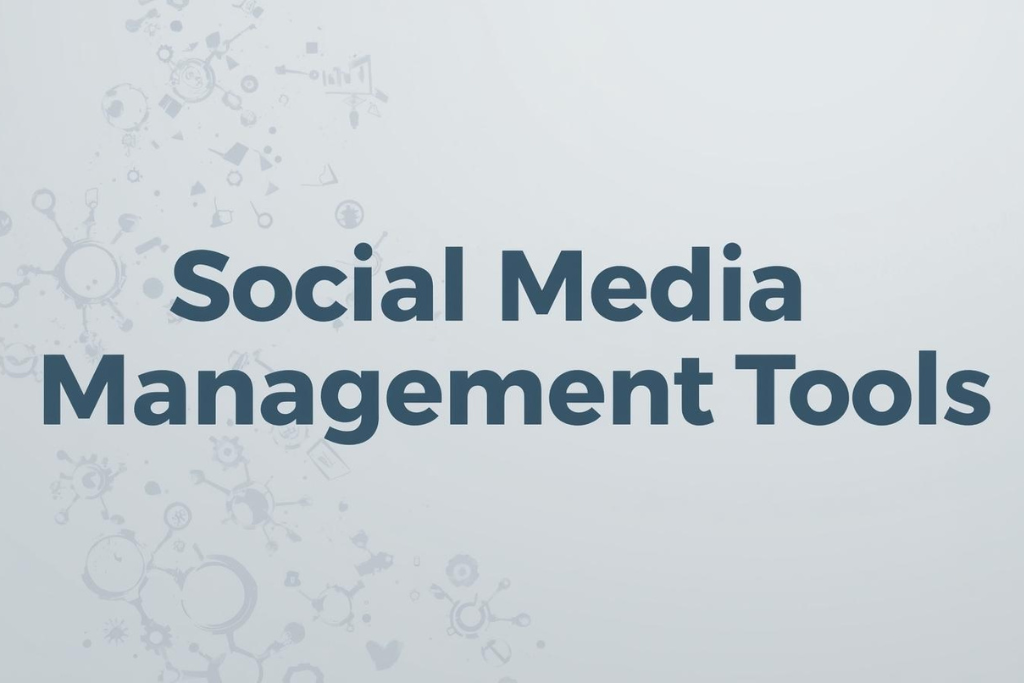Every business, big or small, needs a strong and consistent presence on social media. Managing multiple platforms like Facebook, Instagram, LinkedIn, X (Twitter), and YouTube, however, can be time-consuming and overwhelming. Social media management tools simplify this process by letting you plan, schedule, and monitor all your posts from one place.
They help you stay organized, track engagement, and keep your content consistent without the hassle of switching between accounts. Whether you manage one brand or several clients, these tools save time and keep your social strategy on track. In this blog, we’ll explore what social media management tools are, their key benefits, and how they can help you build and grow your online presence effectively.
What Are Social Media Management Tools?
Social media management tools are software platforms that let you plan, create, schedule, publish, and track your content across different networks, all in one dashboard. Instead of logging into each social account separately, you can manage everything centrally.
They often come with features like:
- Content scheduling and auto-posting
- Analytics and performance reports
- Multi-account management
- Team collaboration and approval workflows
- Comment monitoring and message inboxes
Some tools even let you embed social media feeds directly on your website through integrations like a social media widget or social media aggregator, giving visitors real-time updates from your brand’s accounts.
In short, these tools simplify how you handle your social media platforms, so you can focus on strategy, creativity, and engagement instead of logistics.
Why Your Business Needs a Social Media Management Tool ?
Whether you’re a small business owner, marketer, or creator, here’s why investing in one is worth it:
- Save Time: Batch-schedule posts for weeks or months in advance.
- Stay Consistent: Maintain regular posting even during holidays or off-hours.
- Engage Better: Track and reply to comments or messages from one inbox.
- Understand Your Audience: Get insights into what type of content performs best.
- Collaborate Efficiently: Ideal for marketing teams or agencies managing multiple clients.
- Boost Website Engagement: Use tools with built-in social media widget or aggregator options to display live updates on your site.
Top Social Media Management Tools
Here are some of the most reliable and easy-to-use social media management tools to consider this year:
1. Hootsuite

One of the oldest and most powerful tools in the game, Hootsuite lets you manage multiple social media platforms from a single dashboard.
Key Features:
- Schedule and publish posts automatically.
- Social listening and trend tracking.
- Comprehensive analytics and reporting.
- Team collaboration and permissions.
Best For: Large teams and agencies that need advanced analytics and monitoring.
2. Buffer

Buffer is simple, intuitive, and perfect for beginners. It focuses on helping you plan, schedule, and analyze posts efficiently.
Key Features:
- Clean, user-friendly interface.
- Browser extension for quick post scheduling.
- Built-in analytics for engagement tracking.
- Integration with popular social media platforms like Facebook, Instagram, and LinkedIn.
Best For: Freelancers and small businesses looking for a lightweight, affordable solution.
3. Sprout Social

Sprout Social combines scheduling, publishing, engagement, and analytics with powerful CRM-like features.
Key Features:
- Unified social inbox to manage messages and mentions.
- Advanced analytics and keyword tracking.
- Smart recommendations for post timing.
- Built-in asset library and campaign tracking.
Best For: Brands that prioritize data-driven decision-making and community engagement.
4. SocialPilot

SocialPilot offers a great balance between affordability and functionality. It’s ideal for teams and agencies managing multiple accounts.
Key Features:
- Bulk post upload via CSV.
- Role-based access and post approval workflows.
- Content curation suggestions.
- Client management and white-label reports.
Best For: Agencies and marketers managing multiple client accounts.
5. Later

Originally built for Instagram, Later has evolved into a full social media management suite supporting Facebook, TikTok, Pinterest, and LinkedIn.
Key Features:
- Visual content calendar.
- Media storage and hashtag manager.
- Auto-publishing for reels and carousels.
- “Link in bio” customization.
Best For: Visual brands like fashion, travel, and lifestyle businesses.
6. Zoho Social

Part of the Zoho business suite, Zoho Social integrates seamlessly with CRM and other marketing tools.
Key Features:
- Smart scheduling based on audience activity.
- Real-time monitoring and response dashboard.
- Integration with Zoho CRM and analytics tools.
- Team collaboration and approval processes.
Best For: Businesses already using Zoho’s ecosystem or needing CRM integration.
7. Planable

Planable is perfect for teams that need content review and approval workflows before publishing.
Key Features:
- Real-time content collaboration.
- Visual feed preview for Facebook and Instagram.
- Post approval system with comments.
- Integration with multiple social platforms.
Best For: Agencies and marketing teams managing client campaigns collaboratively.
8. Metricool

Metricool focuses on analytics, performance tracking, and paid ads management alongside post scheduling.
Key Features:
- All-in-one analytics for organic and paid campaigns.
- Audience heatmaps for best posting times.
- Competitor tracking and benchmarking.
- Integration for displaying social media feeds or performance widgets on websites.
Best For: Marketers who want to monitor both organic and paid social results.
How to Use Social Media Management Tools Effectively?
To get the most out of your chosen platform:
- Audit your accounts: Identify which social media platforms are driving the most engagement.
- Plan ahead: Create a monthly content calendar with themes, hashtags, and campaign goals.
- Automate smartly: Use scheduling to stay consistent but stay flexible for trends.
- Monitor engagement daily: Use your tool’s unified inbox to reply and interact.
- Analyze & adjust: Check analytics weekly to learn what’s working.
- Embed your social feeds: Use a social media aggregator or widget to showcase live posts on your site for added authenticity.
Common Mistakes to Avoid
- Posting without a strategy: Random posts don’t build engagement.
- Ignoring analytics: Data reveals what resonates with your audience.
- Not engaging: Scheduling saves time, but replies drive relationships.
- Using too many platforms: Focus on where your audience is most active.
- Skipping website integration: Showcasing your social media feeds boosts credibility.
Conclusion
Social media management tools have transformed how brands manage their online presence. They simplify daily tasks, offer performance insights, and bring all your accounts into one streamlined workflow. From scheduling posts and analyzing data to embedding social media feeds through a widget or aggregator, these tools make your social media marketing more efficient and effective.
Whether you choose Hootsuite for enterprise-level management, Buffer for simplicity, or SocialPilot for team collaboration, the right tool depends on your brand’s goals and scale.

